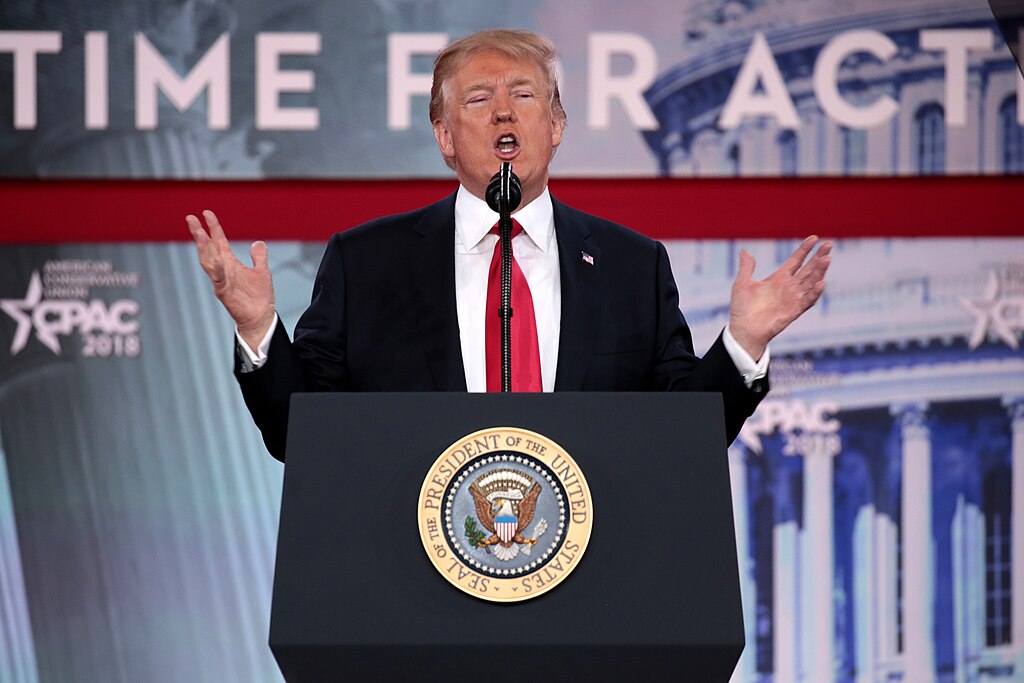Former President Donald Trump has unveiled a sweeping education reform plan aimed at addressing disparities in rural school systems across the United States. The proposal, which emphasizes school funding equity, increased access to digital resources, and expanded teacher incentives, is being touted as a bold step forward for education reform. However, skeptics are raising concerns about its practicality and potential execution challenges.
Bridging the Funding Gap
One cornerstone of Trump’s proposal is addressing the funding inequality between rural and urban school districts. He argues that rural schools, often lacking adequate resources, are unable to provide students with competitive education opportunities. His plan advocates for redistributing federal education funds to ensure that rural districts receive their fair share.
Supporters believe this approach could level the playing field, providing rural students with access to better facilities, updated technology, and extracurricular programs. However, critics are concerned about the reallocation process, fearing it could take funding away from already underfunded urban schools.
Digital Access for Every Student
Trump’s proposal also includes a significant investment in digital infrastructure, aimed at providing high-speed internet access to rural areas. The initiative seeks to close the digital divide, ensuring that students in remote locations can benefit from online learning platforms and virtual educational tools.
While the plan has been praised for its forward-thinking approach, questions remain about its feasibility. Many rural communities lack the technological infrastructure to support high-speed internet, and experts warn that implementation may take years.
Public Reactions on Social Media
The announcement of Trump’s rural education plan has ignited a flurry of reactions on social media. Here’s what six netizens had to say:
- @EduReform2025: "Finally, rural schools are getting the attention they deserve. Long overdue, but will it actually happen?"
- @TeacherMom74: "Redistributing funds sounds great on paper, but I worry it might hurt urban kids too."
- @Tech4EdAdvocate: "Closing the digital divide could revolutionize education in rural areas. Excited to see real change!"
- @SmallTownGrad: "As someone from a rural area, I can’t help but be skeptical. Promises don’t always lead to action."
- @PolicyWatchdog: "Trump’s focus on rural schools is admirable, but we need concrete details, not just headlines."
- @ParentInIowa: "Invest in teachers too! We need to keep talented educators in rural schools for lasting change."
Challenges and Opportunities
The plan’s success hinges on several factors, including bipartisan support and adequate funding. Trump’s proposal for increased teacher incentives in rural areas, such as higher salaries and housing allowances, has been met with cautious optimism. Yet, experts emphasize that teacher shortages and resource gaps cannot be solved overnight.
Furthermore, critics argue that the plan lacks specifics on how federal funds will be redistributed without creating unintended consequences for urban districts. Addressing these concerns will be crucial to gaining widespread support.
Donald Trump’s rural education reform plan has sparked a nationwide conversation about equity in America’s school systems. While the proposal aims to address long-standing disparities, its success will depend on thoughtful implementation and collaboration among policymakers. As the debate unfolds, rural communities are watching closely, hoping that this plan will finally bring the support their schools have long needed.



 Federal Appeals Court Allows Trump’s National Guard Deployment in Washington, D.C. to Continue
Federal Appeals Court Allows Trump’s National Guard Deployment in Washington, D.C. to Continue  Union-Aligned Investors Question Amazon, Walmart and Alphabet on Trump Immigration Policies
Union-Aligned Investors Question Amazon, Walmart and Alphabet on Trump Immigration Policies  Dan Bongino to Step Down as FBI Deputy Director After Brief, Controversial Tenure
Dan Bongino to Step Down as FBI Deputy Director After Brief, Controversial Tenure  U.S. and China Push for Ceasefire as Thailand–Cambodia Border Clashes Escalate
U.S. and China Push for Ceasefire as Thailand–Cambodia Border Clashes Escalate  U.S. Initiates $11.1 Billion Arms Sale to Taiwan Amid Rising China Tensions
U.S. Initiates $11.1 Billion Arms Sale to Taiwan Amid Rising China Tensions  Trump Signals Progress in Ukraine Peace Talks Ahead of U.S.–Russia Meeting
Trump Signals Progress in Ukraine Peace Talks Ahead of U.S.–Russia Meeting  Putin Signals Possible Peace or Continued War in Ukraine at Major Year-End Address
Putin Signals Possible Peace or Continued War in Ukraine at Major Year-End Address  EU Delays Mercosur Free Trade Agreement Signing Amid Ukraine War Funding Talks
EU Delays Mercosur Free Trade Agreement Signing Amid Ukraine War Funding Talks  Trump Administration Plans Major Increase in Denaturalization Cases for Naturalized U.S. Citizens
Trump Administration Plans Major Increase in Denaturalization Cases for Naturalized U.S. Citizens  Trump Administration Proposes Sweeping Limits on Gender-Affirming Care for Children
Trump Administration Proposes Sweeping Limits on Gender-Affirming Care for Children  Trump Announces $1,776 Cash Bonus for U.S. Military Personnel Ahead of Christmas
Trump Announces $1,776 Cash Bonus for U.S. Military Personnel Ahead of Christmas  U.S. Senators Move Toward Deal to Strengthen Military Helicopter Safety Rules
U.S. Senators Move Toward Deal to Strengthen Military Helicopter Safety Rules  Syria, Kurds and U.S. Race to Show Progress on SDF Integration Deal
Syria, Kurds and U.S. Race to Show Progress on SDF Integration Deal  Trump Attends Dover Ceremony Honoring U.S. Personnel Killed in Syria
Trump Attends Dover Ceremony Honoring U.S. Personnel Killed in Syria  Barham Salih Elected as Next UN High Commissioner for Refugees
Barham Salih Elected as Next UN High Commissioner for Refugees  Republicans Raise National Security Concerns Over Intel’s Testing of China-Linked Chipmaking Tools
Republicans Raise National Security Concerns Over Intel’s Testing of China-Linked Chipmaking Tools  U.S.-Russia Talks in Miami Raise Hopes for Potential Ukraine War Deal
U.S.-Russia Talks in Miami Raise Hopes for Potential Ukraine War Deal 































